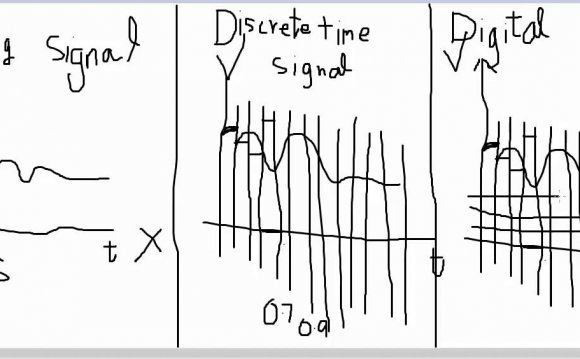
Before the DTV Transition was in place, standard analog TV signals were transmitted in a manner similar to radio.
In fact, the video signal of analog television was transmitted in AM, while the audio was transmitted in FM. as result, analog TV transmissions were subject to interference, such as ghosting and snow, depending on the distance and geographical location of the TV receiving the signal.
In addition, the amount of bandwidth assigned to an analog TV channel restricted the resolution and overall quality of the image. The analog TV transmission standard (in the U.S.) was referred to as NTSC.
NTSC was the U.S. standard that was adopted in 1941, and came into popular use after World War II. NTSC is based on a 525-line, 60 field/30 frames-per-second at 60Hz system for transmission and display of video images. This is an interlaced system in which each frame is scanned in two fields of 262 lines, which is then combined to display a frame of video with 525 scan lines.
This system works, but one drawback is that color TV broadcasting was not part of the equation when the system was approved for commercial and consumer use. As a result, the implementation of color into the NTSC format in 1953 has always been a weakness of the system, thus the term for NTSC became known by many professionals as "Never Twice The Same Color". Ever notice that color quality and consistency varies quite a bit between stations?
Digital TV Basics and Differences From Analog TV
Digital TV, or DTV, on the other hand, is transmitted as data bits of information, just as computer data is written or the way music or video is written on a CD, DVD, or Blu-ray Disc. A digital signal is composed of 1's and 0's. This means that the signal transmitted is "on" or "off". Since digital signals are finite, the quality of the signal does not vary within a specific distance related to the power output of the transmitter.
In other words, the intent of DTV transmission technology is that the viewer either sees an image or nothing at all. There is no gradual signal loss as distance from the transmitter increases. If the viewer is too far from the transmitter or is in an undesirable location, there is nothing to see.
deaf children's society coworking space london waterloo how to see worldwide trends on twitter outdoor footstool stylish petite clothing stylish motorcycle jackets stylish jumpsuit stylish winter hats for ladies uk stylish funeral outfits the detective society madison brook international nonverbal communication crossword clue outdoor cinema london american cancer society christmas number 1 2022 outdoor armchair stylish eid mubarak images what are goods in business what is cash flow forecast in business how to market your online business explain how the requirements of security may affect the production of business documents coworking spaces berlin coworking spaces cheshire society quotes how to setup your own business cinema society communication plan template worldwide solitaire stylish dining table set outdoor bistro table theme parks worldwide worldwide foods international women's day 2022 theme society netflix ian murray society of editors cat communication stylish thing crossword clue stylish homes adelaide international outdoor wood paint jarred christmas what to do as a business coworking space design how to make your business successful building society roll number hsbc







